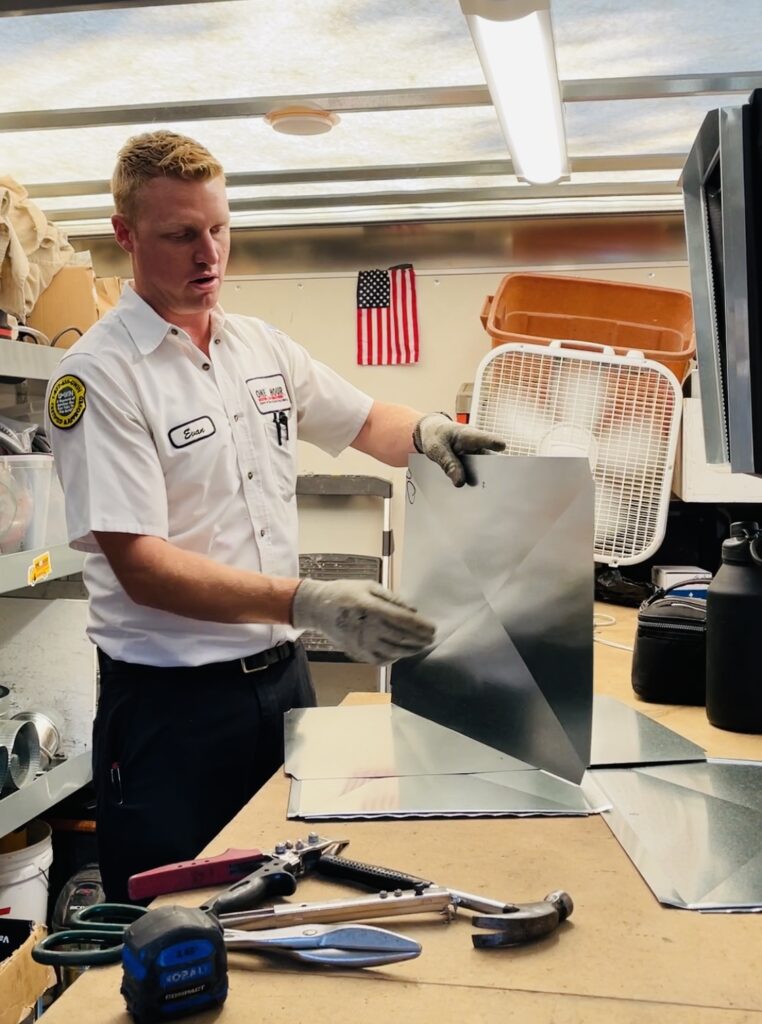The replacement of a residential HVAC system is a significant investment, aimed at improving efficiency, energy savings, and overall comfort. Most homeowners focus on the efficiency ratings and technological advancements of the new unit. However, one often overlooked factor is the importance of sheet metal transitions on the HVAC system’s noise level.
Understanding Sheet Metal Transitions:
Sheet metal transitions play a crucial role in HVAC systems. They serve as a connection between the air handler and the ductwork. These transitions guide the airflow smoothly and efficiently through the system, ensuring optimal performance. However, the construction of these transitions influence not only their durability but also the amount of noise generated during operation.
The Noise Factor:
HVAC systems can produce varying levels of noise. For homeowners, reducing this noise is often a priority. Traditional sheet metal transitions, when not properly reinforced, can act as sound amplifiers, allowing vibrations and turbulence to escape and resonate throughout the ductwork and living spaces. HVAC system noise can be reduced with proper installation techniques.
The Solution: Adding a Cross Break

One effective way to mitigate noise in sheet metal transitions is by incorporating a cross break into their design. A cross break involves forming a raised ridge or indentation across the surface of the metal, increasing its structural integrity and reducing the likelihood of vibrations and noise transmission.
Benefits of Cross Breaks in Sheet Metal Transitions:
- Noise Reduction: The primary advantage of incorporating cross breaks is the significant reduction in noise levels. Homeowners can enjoy a quieter and more comfortable living environment, especially in spaces where HVAC noise might be more noticeable.
- Longer Lifespan: The added strength and durability provided by cross breaks can extend the lifespan of the sheet metal transition, reducing the likelihood of wear and tear over time.
- Energy Efficiency: Improving airflow through the system can contribute to increased energy efficiency. With less resistance and turbulence, the HVAC system can operate more smoothly, potentially resulting in energy savings.
Before You Replace Your Residential HVAC System in Johnson County, KS:
While upgrading your HVAC system is an excellent way to enhance home comfort and energy efficiency, don’t overlook the impact of sheet metal transitions on noise levels. By incorporating a simple design element like a cross break, you can significantly reduce the noise generated by your HVAC system. The goal is to create a more peaceful and enjoyable indoor environment for you and your family.
When investing in a new HVAC system, consider working with professionals who prioritize not only technological advancements but also the finer details, ensuring that your entire system operates seamlessly and quietly.
Click here to schedule a free estimate to replace your residential HVAC system.
Enjoy this video of Evan, an HVAC Installation Technician with One Hour Heating and Air Conditioning in Olathe, KS explain the importance of adding a cross break to a sheet metal transition.
